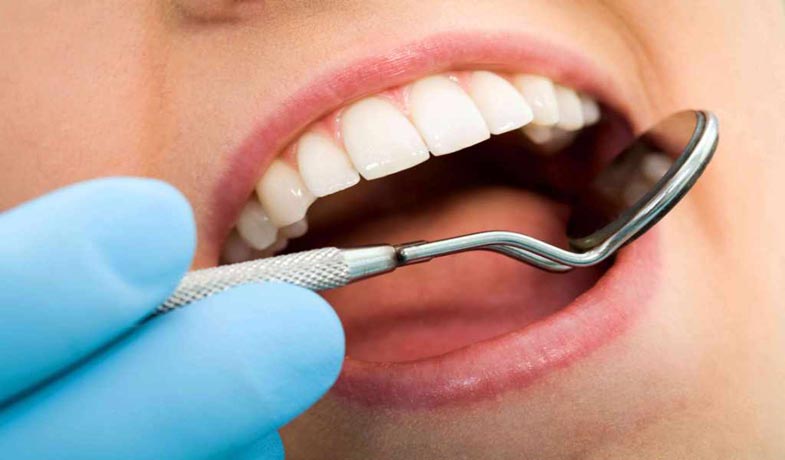Patients enter the practice already trembling and sweating, they often do not manage to sit down in the dentist’s chair for fear and they repeatedly break off treatments that have been started. A vicious circle is formed between pain, fear of the dentist, pain when brushing and further decay of the teeth.
The teeth first become carious, then they break, die off and inflammation develops at the root tips. Most patients have not visited the dentist for many years. The molars are then largely destroyed and so-called log abscesses have formed, starting from an inflammation at the root tip of the teeth. This refers to accumulations of pus in defined areas of the face. These inflammations form only after prolonged inflammatory events. However, once they have formed, it is not possible to eliminate the inflammation conservatively, even with the use of the strongest antibiotics. In most cases, treatment by an oral and maxillofacial surgeon is then necessary. Incisions must be made from outside the mouth. Appropriately inserted drainages can then continue to drain pus and inflammatory secretions on the days after the operation. With concomitant treatment with i. V. Antibiosis then regresses the inflammatory picture. However, if no dental rehabilitation is carried out, it often takes less than half a year before the inflammation builds up again and a new surgical intervention becomes necessary as part of an inpatient stay.
This is not only stressful for the patient and ultimately also life-threatening due to the risk of obstruction of the upper respiratory tract, but also causes considerable damage to the economy. The inpatient stays after such incisions, which often last up to two weeks, together with a short stay in the intensive care unit, often cost more than € 10,000.00. The sensible approach is therefore to start adequate therapy with an oral and maxillofacial surgeon before such clinical pictures develop. Anxious patients and small children as well as physically or mentally handicapped people can have dental treatment under anesthesia. These costs will continue to be borne by the statutory health insurance.
The health insurance companies also know that if these patients are not treated, the costs will be significantly higher. Only with oral and maxillofacial surgeons is the full spectrum of conservative and operative dentistry available to the patient. Here, abscesses can also be opened from outside the mouth – which dentists are not allowed to do – and the entire spectrum of dental treatment can be provided. So there is no longer any reason to be afraid of the dentist because treatments under anesthesia are possible and sensible.
Other topics related to health and medicine
